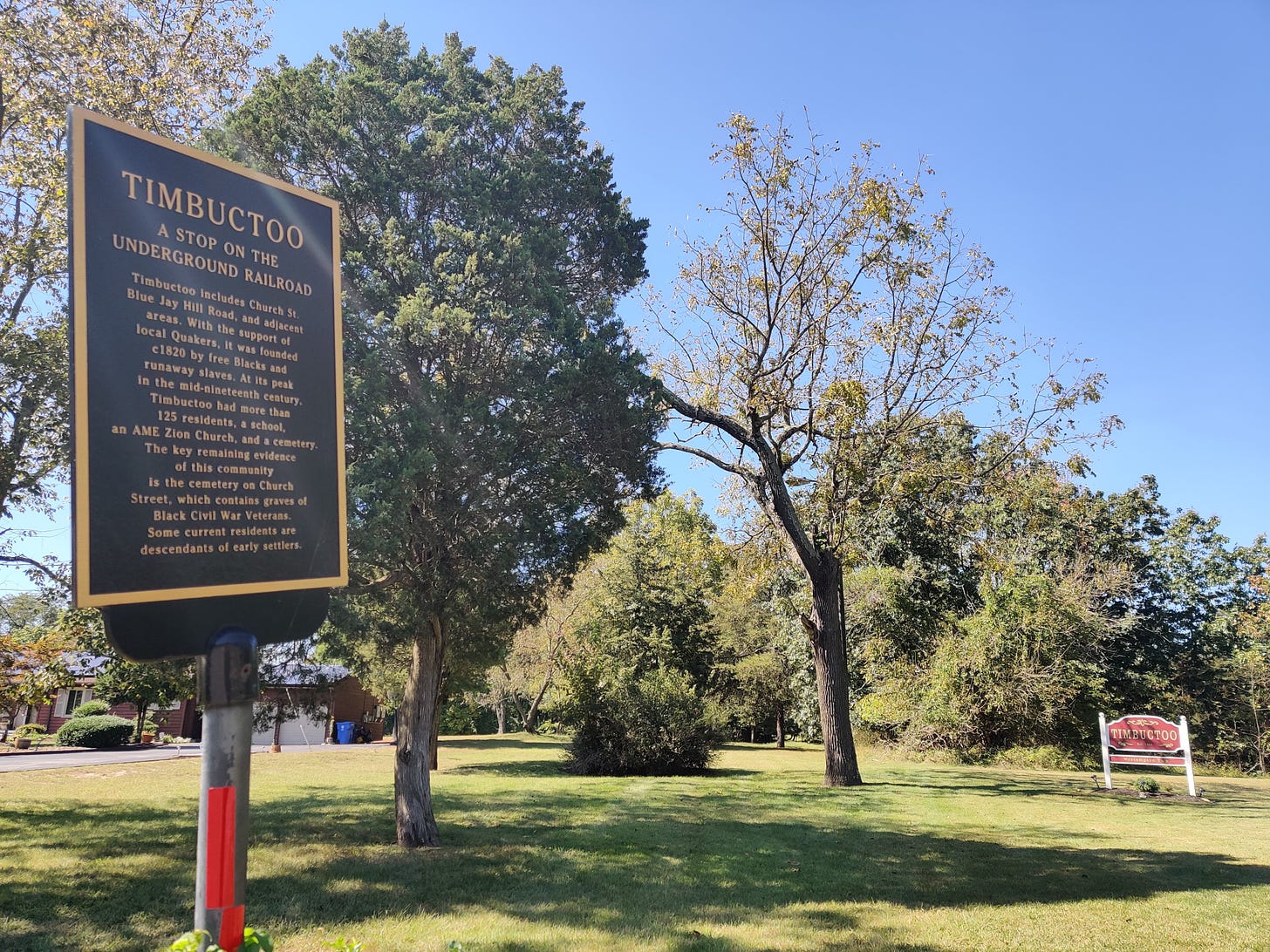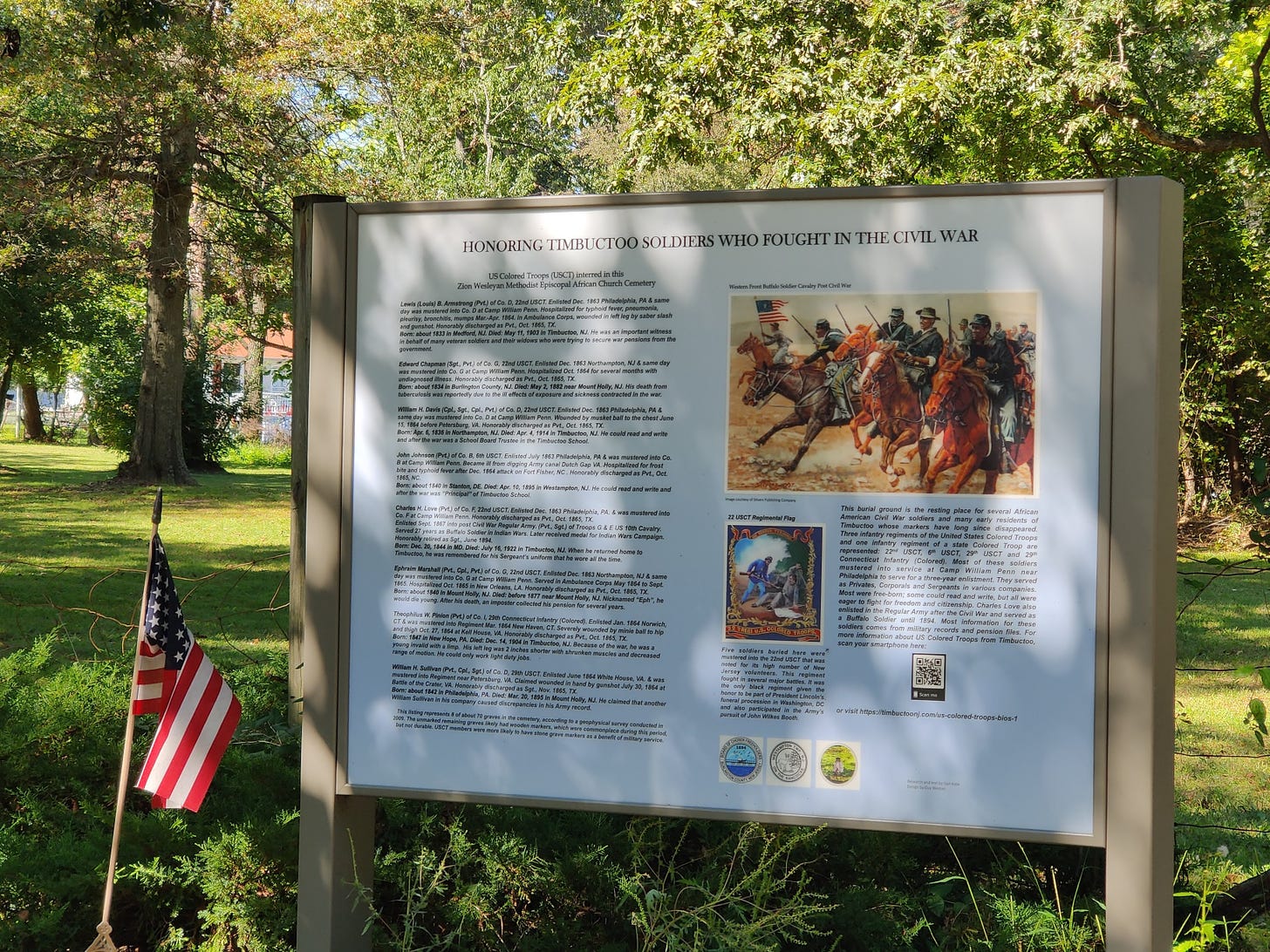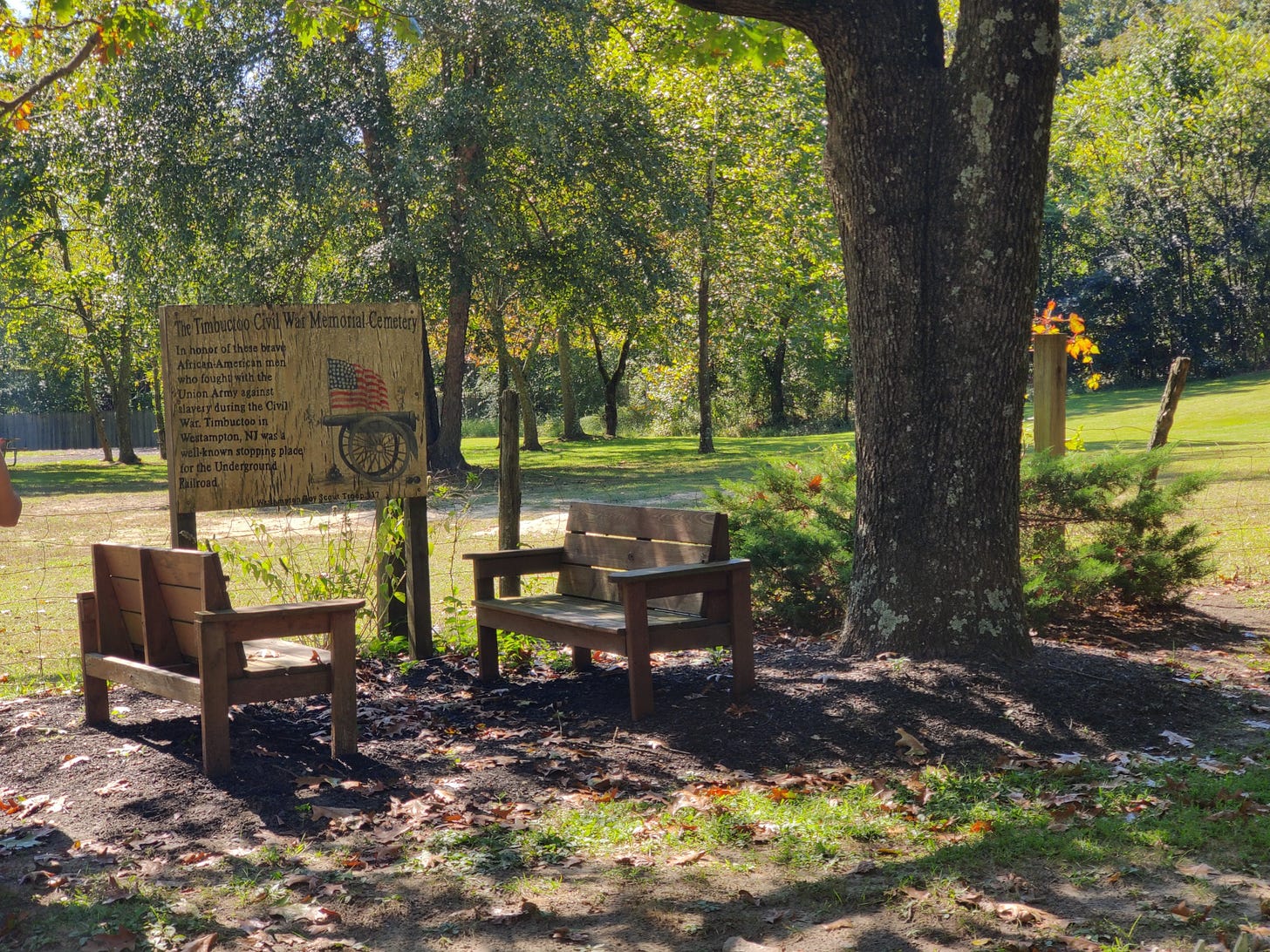What is lost, and what is forgotten? What is forgotten, and what is ignored?
Timbuctoo was a community in New Jersey, founded by former enslaved people, who fought off slave catchers from Philly who came hunting. It made the local paper. But I learned very little about slavery in New Jersey in my education. Even “good” stories like this one, where the slavers were defeated.
Thanks to the Timbuctoo Historical society, this fascinating town steeped in American history is not all lost. Cemeteries are often the linchpin for preserving a forgotten town because the stones last, and people are less likely to scavenge them for building materials than bricks of buildings and cellar holes, which is how some ghost towns virtually disappear.
The cemetery in Timbuctoo, a part of Westhampton NJ, is the resting place for many Black Union soldiers, who settled there after the war. Tending those graves kept the history alive, and now there are archaeological digs to preserve the housing, which was on the hill behind the cemetery, and is lost to time. There was also a church here, that is completely gone. But a new one has taken its place, and they mind the grave sites.
If you’re going to Second Time Books, a mere 8 minutes away, you should come here and pay respect and learn some history. I had no idea that New Jersey had a town of former enslaved people who fought off slave catchers hunting fugitives here, but you can read all about the Battle of Pine Swamp here at the Timbuctoo website. Explore the website for more information, there’s a lot there.
When I visited, I met a tour group who were expecting a presentation, but the presenter was sick and had to cancel. The site is not on any map, but you can go to Church Street in Timbuctoo/Westhampton on Google Maps, and drive slowly down the cozy street, and find the historical site. The big red Timbuctoo sign on the road will lead you here.
It felt like parts of Louisiana, to me. I’m not alone. My mother-in-law, who hails from that state, said she never thought there were parts of New Jersey like “this,” when we explored the Pine Barrens briefly during her visit. We went to the Carranza memorial, which marks the spot where Emilio Carranza, the “Lindbergh of Mexico” (except I bet he wasn’t a Nazi) crashed returning from a good will flight to the United States. The American Legion reenacts the carrying of his remains every year, fulfilling a promise made to the Mexican children who paid for the memorial with their pennies. But that’s another story.
Timbuctoo is an important piece of American history. It feels erased, to me. I didn’t know that New Jersey allowed slave catchers to hunt fugitives here, and that we nearly sided with the traitors of the Confederacy, until long after my public education. But that’s only half the story. Some fought against this, and the Underground Railroad had many “stops” here. Another is the nearby Peter Mott house, which I will visit and photograph soon.
The historical society, and archaeologists including Charles Barton from the local university, have unearthed over 15,000 artifacts from Timbuctoo. I hope the state funds a museum here, someday. Like the nearby Batsto village, which underwhelmed me. That was a company town led by one rich man, and its story is important as well, but visiting it was kind of boring. They do “living history” days, maybe they will be more engaging.
This is the weekly free post from What Pluckery Is This? If you’d like full access to my story archive, which includes stories chosen for the Year’s Best Mystery & Crime, please consider becoming a full subscriber using the button below.








Thanks so much, again, for this account, and for bringing this forgotten spot to light. (It feels forgotten to me too.) I considered writing this when I saw your post the first time around on Patreon and didn't because it's a bit dark, but since I'm getting a second chance ... your comment about cemeteries reminded me of one awful case I have seen recently in which the headstones of a DC Black cemetery were indeed scavenged. Back in the '60's in DC, a Black cemetery was to be relocated to Maryland. During this relocation, the headstones were not relocated with the graves but were instead sold to be dumped in the Potomac to shore up the banks of the river. Just a few years ago, the wife of a VA politician was walking along the banks and pointed at one and said, "isn't that a headstone?," and that got the ball rolling in terms of trying to dredge up the old headstones and bring them out to the Maryland cemetery, but of course that doesn't address all the people who thought their kin didn't have headstones, and all the people whose headstones are now missing. Anyway, I just thought of it in terms of another example of disappearing a physical manifestation of Black existence. https://www.washingtonpost.com/local/virginia-politics/headstones-black-cemetery-potomac-river/2020/10/25/3586f0d4-0d7a-11eb-8074-0e943a91bf08_story.html
Great story. I love stuff like this.